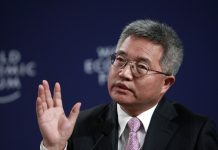The recent U.S. short-term interest rate futures reflect a reduced chance of an interest rate increase by the Federal Reserve ahead of its two-day March policy meeting.
St. Louis Fed President James Bullard, a voter on the policy-setting Federal Open Market Committee, has previously said that he was open to the idea of an inter-meeting interest rate hike.
However, he did not repeat that feeling in an interview with CNBC on February 14. Instead, he suggested the need for 100 basis points or a full percentage point of policy-tightening by July 1, which is slightly faster than he had previously suggested. This implies that there will be at least one hike of a half-percentage point instead of the quarter-point increases that the Fed has used in recent years.
The debate on whether there would be any moves between meetings was made irrelevant by the Fed's release late on February 11 of the schedule for its final month of asset purchases. Fed officials have said before that the U.S. central bank is unlikely to tighten rates before the conclusion of its bond buying program.
"An inter-meeting rate hike was never a likely outcome," wrote Lou Crandall, chief economist at Wrightson, in a research note. "The primary goal of an emergency move in between meetings is to shore up confidence and staunch any financial market bleeding that might lead to further economic damage. That is why most inter-meeting moves are rate cuts rather than rate hikes."
Crandall added that, if long-term inflation expectations were getting out of control, an argument might be made for a move between meetings. But the University of Michigan's 5-to-10-year inflation expectations, which held steady at 3.1% in the early February report, dispelled any notion of that.
"With long-term inflation expectations well within the range of recent decades, there is nothing obvious to be gained by appearing to panic," Crandall concluded.




















